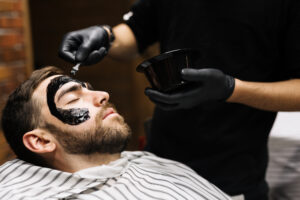The wellness industry in the Gulf, particularly in cities like Dubai, has evolved into a significant sector that reflects global wellness trends. And those trends are heading upwards: In 2021, McKinsey & Company estimated the global wellness market at US$1.5tr. To narrow it down a little, the GCC male grooming products market alone reached $4,233m in 2023 and is expected to reach $7,597m in the period 2024 to 2032.
Clearly, this represents a huge opportunity, but gaining success here is all about tailoring your offering to the local markets. What are the needs and preferences of the various cultures in our region, and how will your products intersect with them? How are you going to deliver culturally appropriate services and targeted wellness solutions. Is your branding going to be region-specific, and how will your products or services fit in with the region’s growing sustainability agenda? These are questions I’ll discuss in this article.
As wellness becomes a more prominent part of everyday life, we know that men in the region are increasingly embracing self-care services such as spas, fitness routines, mental health support, and personal grooming. So let’s start by understanding the scope of this industry – what it is, and what it isn’t.
What does ‘men’s wellness’ actually include?
Men’s wellness covers a wide range of services that go beyond traditional concepts of fitness and health.
The first category to consider is grooming and personal care. Men’s grooming is no longer limited to haircuts and shaves – today, upscale grooming establishments in Dubai and beyond offer comprehensive services such as manicures, pedicures, facials, beard trims, and even eyebrow shaping. These services are becoming more sophisticated, with tailored skin treatments designed specifically for male skin. Salons often offer anti-ageing facials, deep cleansing, and hydrating treatments alongside regular grooming services.
The next category could broadly be called fitness and physical wellness. This is perhaps the most prominent aspect of men’s wellness in the Gulf. The UAE’s fitness market is expected to reach a value of $600m by 2025. Luxury gyms, boutique fitness studios, and wellness retreats are growing in number as men invest in their physical health. The focus has expanded beyond traditional weight training to include holistic fitness offerings incorporating mental health, recovery, and sleep wellness.
Mental wellness and stress management are frequently overlooked. With the Gulf’s high-stress environment, mental wellness is becoming an increasingly important part of the conversation around men’s health. So, services designed to reduce stress, anxiety, and mental fatigue are becoming more popular. This includes therapies like massage, acupuncture, and more modern offerings like cryotherapy.
Tailoring your men’s wellness offering to the GCC region
As we have discussed, starting a men’s wellness business in the GCC region requires a tailored approach that aligns with local cultural norms, preferences, and needs. Here’s my take on how you could adapt your offerings to the region. These may not all apply to your potential customers, but they’re important to have in mind while you determine who exactly you’re going to be appealing to:
- Culturally appropriate services: Consider offering privacy-focused services for wellness and grooming, as personal discretion is valued in the region. Respect local traditions by offering options for male-only spaces for fitness, spa, and grooming services. Ensure offerings align with Islamic principles, such as Halal-certified wellness products or treatments.
- Targeted wellness solutions: Think about addressing common regional health concerns such as obesity, diabetes, and heart health, which are prevalent due to lifestyle factors. Offer stress management and mental health services tailored to professional men, highlighting career-focused wellness programs.
- Premium and luxury positioning: You might try to cater to the GCC’s preference for luxury with high-end wellness products and services, such as bespoke grooming packages, personalised nutrition plans, and exclusive membership options. Incorporate VIP services, including at-home wellness treatments or exclusive fitness consultations, for high-net-worth individuals.
- Region-specific branding and marketing: Depending on your audience, consider using Arabic language in marketing materials and emphasise themes of family which resonate with local values. Collaborate with local influencers and wellness advocates to build trust and brand awareness. Highlight Islamic heritage in wellness by promoting natural remedies, such as hijama (cupping therapy) or Sidr honey treatments, alongside modern solutions.
- Climate-responsive products and services: Introduce skincare and wellness products tailored for hot and arid climates, such as UV protection, hydration-focused treatments, and anti-pollution skincare. Offer indoor fitness and wellness activities to combat the challenges of outdoor heat.
- Focus on community and networking: Incorporate networking events with wellness themes that appeal to business-minded men in the GCC.
- Government and corporate partnerships: Collaborate with local governments or companies to promote wellness programs under their corporate social responsibility (CSR) initiatives, targeting male employees. Align with the various GCC initiatives (such as Vision 2030 in Saudi Arabia) that aim to promote health and wellness as part of national development strategies.
By addressing the GCC region’s unique cultural, environmental, and lifestyle needs, your men’s wellness business can effectively resonate with the target audience and establish a strong presence in the market.
Global comparisons: How does the Gulf measure up?
While the wellness sector in the Gulf is rapidly growing, Western markets such as the US and Europe are ahead particularly around preventative care and mental wellness. However, the Gulf is in the perfect position to take advantage of this unique opportunity. So, let’s look at three different GCC countries and what they are doing to put health and wellness front and centre.
- UAE: The Dubai Health Experience, launched by the Dubai Health Authority, highlights wellness as a key driver of the UAE’s expanding health tourism sector. The government continues to collaborate with several partners to advance all aspects of tourism, particularly in medical and wellness-related services. The Dubai Fitness Challenge, known as Dubai 30×30 is a government-backed program to promote self-care through fitness by offering a month-long schedule of free fitness classes, exciting events, and wellness-focused activities throughout the city, encouraging both residents and visitors to prioritise their health.
- Saudi Arabia: Health and wellness are central to the nation’s Vision 2030, particularly under the ‘Vibrant Society’ pillar, which aims to enhance physical, mental, and social well-being, reduce disease prevalence, and encourage greater participation in physical activities. Key initiatives include the development of a wellness village in Jeddah, programs that promote healthy habits in schools and healthcare facilities, and workplace wellness projects that aim to improve the overall quality of life.
- Kuwait: Kuwait is also committed to improving the health and wellness of its population through the Kuwait Institute for Scientific Research. Its Food and Nutrition Program provides the Ministry of Health with evidence-based recommendations to shape food-related policies that monitor and improve public health. Notable achievements include enhancing traditional Arabic bread to increase fibre intake and the establishment of a central food control laboratory under the Kuwait Municipality.
A growing market that’s ready for your innovation
The rise of men’s wellness in the Gulf presents a transformative opportunity for businesses to cater to a growing market that values health, self-care, and community. With regional preferences rooted in cultural traditions, luxury, and climate-specific needs, businesses must tailor their offerings to resonate deeply with local audiences. By aligning services with GCC initiatives such as Saudi Arabia’s Vision 2030 or UAE Vision 2021, wellness providers can establish themselves as pioneers in this burgeoning sector.
As the Gulf leverages its unique strengths, from high disposable incomes to government-backed health initiatives, the men’s wellness industry is poised to thrive. Businesses that prioritise innovation, cultural understanding, and sustainability will not only gain a competitive edge but also contribute meaningfully to the region’s growing wellness landscape.


